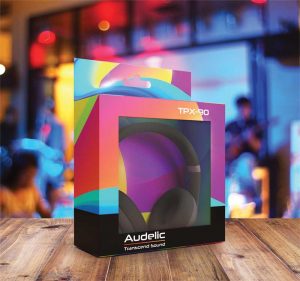Showing printing’s true colours
by carly_mchugh | 9 February 2024 5:19 pm
 [1]
[1]Today’s expanded gamut ultraviolet (UV) inks can be used for a variety of signage and branding applications. Images courtesy Roland DGA
By Ginny Mumm
With the ability to print directly on almost any surface, ultraviolet (UV) LED printers have become increasingly popular for a variety of consumer, corporate, and industrial applications. This has led to some remarkable advances in printing technology and software products in recent years. As a result, the global market size for UV LED printers is projected to grow at a compound annual growth rate (CAGR) of 9.5 per cent from 2023 to 2030, and reach US$758.7 million (C$1 billion) by 2030.1
The introduction of advanced flatbed, hybrid, and roll-to-roll UV printers; updated raster image processor (RIP) software; and new, wider ink colour gamuts are major contributors to this growth in the market. To find out more, we spoke with Jay Roberts, UV printer product manager at Roland DGA, about how print service providers (PSPs) can leverage new colour gamuts and technology to improve their UV-printed offerings for clients.
How have colour gamuts expanded over the past few years? What factors drove this expansion?
Jay Roberts (JR): The push for expanded colour gamuts came from both manufacturers and end users. The biggest driving factor is the desire to hit corporate colours more accurately. While everyone wants to be able to produce vibrant, fun, and fully saturated colour that pops, it’s also critical to be able to accurately print brand or Pantone colours for corporate clients. The more of those targeted colours you can hit, the better you are as a printing company, and the better the quality of products end users can provide for their clients.
The ink colour technology that has been developed over the last 10 years for the eco-solvent market—which includes green, orange, and light cyan inks—has been translated to inks for UV machines. Red inks have also been introduced to enhance the available colour space, and bringing out specific colours helps increase the gamut in other areas.
What are the benefits of having these expanded gamuts for PSPs and other industries?
 [2]
[2]Raster image processor (RIP) programs help printers keep their UV colour output consistent across a variety of substrates.
JR: The drive for brand colour matching started almost 50 years ago, with what was then called “Coca-Cola red.” Now, it’s grown to match “Home Depot orange,” “Microsoft blue,” and a whole host of other corporate hues. From offset to banners to point-of-purchase (POP) displays, the greater your ability to hit those colours across a variety of platforms, the better you can serve your clients’ range of print needs.
Today’s expansions in colour gamuts allow users to target a larger colour space, with all the vibrant and photographic elements that come with it. For instance, specific inks can target up to 89 per cent of Pantone colours, which is a big jump up from previously being able to target 55 to 60 per cent. The increased ability to target many more Pantone colours represents a genuine improvement in PSPs’ capacity to provide outstanding colour output.
Tell us about the recent evolution of inks for the UV market.
JR: When people talk about colour matching, they’re typically aiming to match something originally printed on another platform, perhaps months or even years ago. They want their output to look perfect to the person who is buying the job. The evolution of inks has really increased the ability for PSPs to achieve a “shared visual appearance” between different printing platforms.
An expanded gamut with orange and red ink was developed over time and with extreme precision. The result is an inkset that is very effective at achieving a shared visual appearance, with Delta Es (a measure of how much a displayed colour differs from its input colour) of under two—a level of difference which is almost indistinguishable.
How does state-of-the-art printing equipment incorporate these new capabilities?
JR: Ultimately, we like to say even the most advanced printer is stupid. What I mean by that is, although, mechanically, the printer needs to be operating efficiently and the nozzles have to be firing precisely, it’s the RIP software that drives the printing and ensures the inks fire at the correct time and in the correct way.
To achieve the correct colours in UV print, three critical elements need to work together: the viscosity of the ink has to line up with the firing capability of the printheads and the curing ability of the lamps. We call this the UV printing trifecta.
Newer devices have achieved this trifecta and can run the whole process twice as fast as previous generation printers. These innovative inkjets use specially formulated inks, precise printheads, and high-quality UV lamps to deliver a very high level of performance. With an advanced inkjet, you can hit more Pantone hues and achieve amazing colour that explodes off the page without the results looking unnatural. This is because the colours are balanced, and the gradations are smooth.
How are newer RIP programs helping PSPs take advantage of expanded ink gamuts?
JR: Another way of looking at the printing process is to say printers are simply painting with the palette they are given. The RIP is responsible for providing that palette by supplying the printer with the best possible colour data.
Today’s RIP software uses colour engines that can provide a multitude of different colour libraries. These libraries include information for printing on uncoated, process coated, and other types of media. Users can even edit a colour library depending on what they need, so the next time, the printer will have those edits already incorporated. All of these advances help users produce the best possible prints.
How have all of these changes affected UV print’s colour matching capabilities?
 [3]
[3]Point-of-purchase (POP) displays are among the many applications where maintaining the integrity of brand colours is important.
JR: Generally speaking, there has been vast improvement in the ability to match colours. Over time, manufacturers have developed inks that actually help enhance the colour space, rather than just throwing splashy colours on the substrate.
It can take time to develop an ink capable of satisfying the formulation demands of the printing process, as well as the colour demands for expanding the gamut. However, when companies invest in researching and developing those inks, the result can be a precise and balanced ink formulation that blends with the other inks to produce a widened colour space.
Some companies develop transition colours by using light cyan or light magenta, instead of coming out with new inks and adjusting their software to accommodate the changes. Others develop new inks and adjust the dot and wave patterns to ensure a fluid transition with no choppy breaks. Blending is managed by the RIP software, where the ink’s fine droplet sizes and minute spread is paired with instant curing. On the microscopic level, these changes create expanded gamut capability and allow you to seamlessly transition from high contrast colours to subtle shading.
What do you see happening in the next few years with ink colour gamuts for the UV market?
JR: There are always ink innovations in development, some of which may turn out to be fads, and others which will have staying power. For example, gloss and white inks are currently popular, and metallic inks were previously of interest. Among the advances people in the industry are currently discussing are photoelectric, phosphorescent, and reflective inks.
Ink technology will continue to evolve, and manufacturers will adjust their offerings based on how popular these inks prove to be once they come to market. The process is always working towards achieving balanced colour. As these newer products mature in the market, they may be further developed for qualities such as added durability and improved adhesion.
Notes
1 For more information, visit https://www.verifiedmarketresearch.com/product/uv-led-printers-market.
Ginny Mumm is a freelance consultant for digital inkjet printer/cutter provider Roland DGA. For more information, visit www.rolanddga.com.
- [Image]: https://www.signmedia.ca/wp-content/uploads/2024/02/LGMG_Billboard-2.jpg
- [Image]: https://www.signmedia.ca/wp-content/uploads/2024/02/Industrial-Power-Generator-Louis-Energy-3.jpg
- [Image]: https://www.signmedia.ca/wp-content/uploads/2024/02/Point-of-sale-display.jpg
Source URL: https://www.signmedia.ca/showing-printings-true-colours/
